Dieterich Leonhard Oskamp (1756-1803) aka Dirk Leonhard Oskamp was a Dutch natural history author.
Dieterich Leonhard Oskamp (1756-1803) aka Dirk Leonhard Oskamp was a Dutch natural history author.
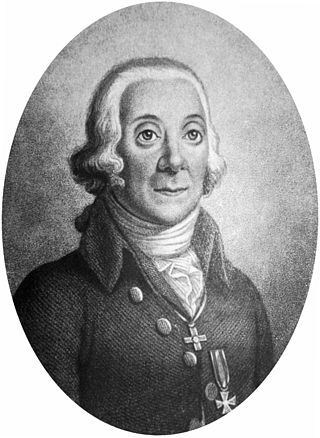
Peter Simon Pallas FRS FRSE was a Prussian zoologist, botanist, ethnographer, explorer, geographer, geologist, natural historian, and taxonomist. He studied natural sciences at various Universities in early modern Germany and worked primarily in the Russian Empire between 1767 and 1810.

The Canellaceae are a family of flowering plants in the order Canellales. The order includes only one other family, the Winteraceae. Canellaceae is native to the Afrotropical and Neotropical realms. They are small to medium trees, rarely shrubs, evergreen and aromatic. The flowers and fruit are often red.
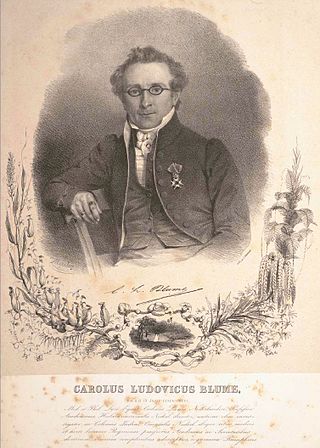
Charles Ludwig de Blume or Karl Ludwig von Blume was a German-Dutch botanist. The standard author abbreviation Blume is used to indicate this person as the author when citing a botanical name.

Franz von Paula Schrank was a German priest, botanist and entomologist.
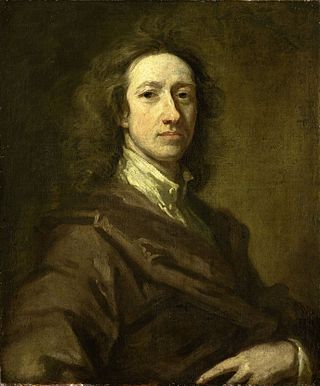
Cornelis de Bruijn or Cornelius de Bruyn, also formerly known in English by his French name Corneille Le Brun, was a Dutch artist and traveler. He made two large tours and published illustrated books with his observations of people, buildings, plants and animals.

Four generations of the Sepp family, publishers and artists were naturalists or entomologists. The Sepp company became famous for the numerous large natural history collections of plates that appeared between 1768 and 1860. They published translations from English, French and German authors on natural history, prints by Petrus Camper, an anatomist, but also some religious songs. Pieter Cramer and Caspar Stoll, also entomologists, had their works published by Sepp.

Caspar Stoll was a naturalist and entomologist, best known for the completion of De Uitlandsche Kapellen, a work on butterflies begun by Pieter Cramer. He also published several works of his own on other insect groups. Stoll's 1787 publication on stick insects, mantises, and their relatives is also well known. It was translated into French in 1813.

Essequibo was a Dutch colony in the Guianas and later a county on the Essequibo River in the Guiana region on the north coast of South America. It was a colony of the Dutch West India Company between 1616 and 1792 and a colony of the Dutch state from 1792 until 1815. It was merged with Demerara in 1812 by the British who took control. It formally became a British colony in 1815 until Demerara-Essequibo was merged with Berbice to form the colony of British Guiana in 1831. In 1838, it became a county of British Guiana till 1958. In 1966, British Guiana gained independence as Guyana and in 1970 it became a republic as the Co-operative Republic of Guyana. It was located around the lower course of the Demerara River, and its main settlement was Georgetown.

Olfert Dapper was a Dutch physician and writer who wrote books about world history and geography although he never travelled outside the Netherlands.

Samuel Iperuszoon, Knight Wiselius was a successful Dutch lawyer and a prominent Patriot and democrat, involved in the dismantling of the Dutch East India Company (VOC) and the negotiations over the Cape. Wiselius was a witty, Voltairian spirit with political views far ahead of his time who would end his days writing dramas on Classical themes. Wiselius corresponded with nearly all the main players at the time of the Batavian Republic and it would be impossible to know that period completely without his carefully kept and neatly written correspondence. He was also a poet, historian and superintendent of the police.

Adolphus Ypey or Adolphus Ypeus or Adolf Ypey, was a Dutch botanist and Doctor of Philosophy and Medicine who graduated at the University of Franeker and stayed on to lecture in botany. He later lectured in Medicine at the University of Leyden.
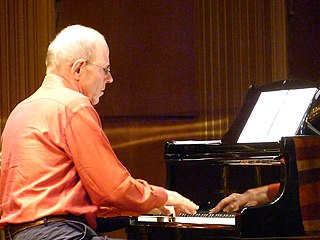
Guus Janssen is a Dutch composer of contemporary music and a recording artist. A pianist and harpsichordist, he is also active as a jazz performer.
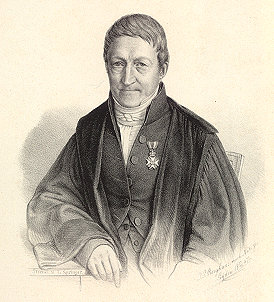
Matthijs Siegenbeek was a Dutch academic. From 1797 to 1847 he was the first professor of the Dutch language at the University of Leiden. From 1803 he was the member, then secretary, of the head-office of that university's literary faculty. Initially he was a Mennonite voorganger in Dokkum.

Jacob Campo Weyerman was a painter and writer during the period known as the Dutch Enlightenment. His work encompassed flower and fruit still life paintings, satirical magazines, plays, and biographies of painters. He usually signed his paintings with Campovivo.

Johannes Zorn was a German pharmacist, botanist and botanical illustrator.

Cornelis Ploos van Amstel, was an eighteenth-century Dutch painter and art collector.

Adriaen Verwer was a Dutch Mennonite merchant, scholar, philosopher and linguist. He wrote books on language, religion and maritime law. He is best known for his grammar Linguae Belgicae, published anonymously in 1707. He is often regarded as the linguistic mentor of his younger friend Lambert ten Kate.
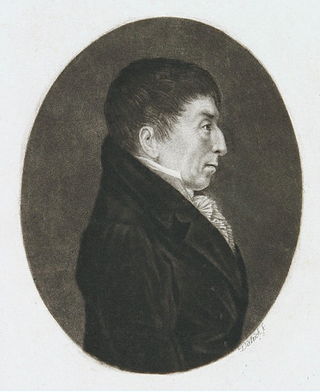
Johan Carl Krauss, was a German-born professor of medicine at Leiden, botanist, taxonomist and author of botanical books. He was the son of Christophorus Adam Krauss, a physician at the court of Prince Hohenlohe, and Dorothea Zolner. He is best known for his publication "Afbeeldingen der fraaiste, meest uitheemsche boomen en heesters".

Nicolaas Meerburgh was a Netherlands gardener, botanist and botanical illustrator.